by bria4123 on October 23, 2011
Gothic architecture evolved into many different styles over time. It also took on many regional variations. We saw examples of classic style in Top Gothic Cathedrals, Churches and Chapels Part One. Now we’ll explore ways Gothic style changed.
1. Wells, England. While the French loved towers that rise to the heavens, the English related to horizontal frontages. The west facade extends in both directions, with lots of sculpture.
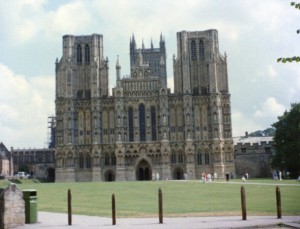
2. Cologne, Germany. Its west facade is a stunner. It’s overwhelmingly large, but it was built in the 19th century. The cathedral’s real treasures are at the other end. [click to continue…]
by bria4123 on October 22, 2011
Renaissance means rebirth. But it was much more profound than a one-dimensional resurrection of the ancient West.
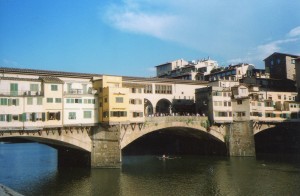
Much medieval thought was still in place. Many people still saw the universe as populated with levels of angels above us and beasts below. and Unified Christendom was still an ideal that many people fought for. But increasing numbers of people were questioning these old ideas of a unified system of symbolic meanings under God. The French writer Rabelais said that a color is just a color, and the Reformation was in full force. Multiple views of the world were side by side, and this gave art and language a lot of depth.
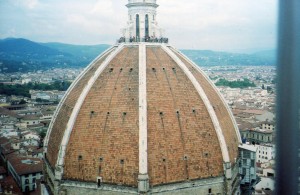
Erich Auerbach, a stellar scholar of Western literature, wrote that Renaissance drama had many more settings and characters than ancient Greek drama did. Perspectives of the world were expanding. No other period mixed so much of the classical, medieval and modern at the same time.
Kierkegaard and Nietzsche admired the Renaissance for its emotional intensity. They thought the modern period was more mechanical and emotionally muted.
So here’s a list of places where you can dive into the Renaissance in its full glory. [click to continue…]
by bria4123 on October 21, 2011
Sukhothai Buddha statues are some of the most revered art forms in Thailand. They have captivated many Western travelers too.
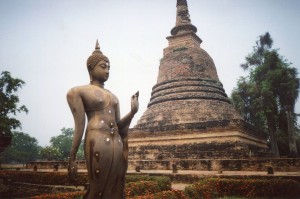
While Sukhothai style was being perfected, in the fifteenth century, Florentines were representing the body according to more Western conceptions.
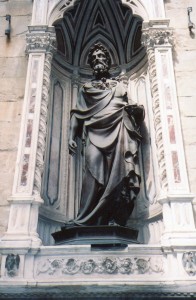
This statue of St. John the Baptist, by Lorenzo Ghiberti, is one of a set of statues on the outer walls of Florence’s Orsanmichele. They’re immensely influential in Western art. Several sculptors made them in the 1410’s, and they stressed the body as corporal and monumental, rather than the debased temporary seat of the soul that many medieval artists had seen it as.
These statues inspired Masaccio and Masolino in the 1420’s, when they painted Adam and Eve as fully embodied people. They continued an artistic lineage that culminated in Michelangelo’s muscled figures. Renaissance Florentines were glorifying the body as a distinct entity that’s fully present in the world.
But Thais were structuring their growing states around different ideas, and creating equally beautiful art as their models of reality. [click to continue…]
by bria4123 on October 21, 2011
Actually many Malay worlds. The Malays’ ancestors originated in China and Taiwan, and began to migrate islands throughout Southeast Asia about 5,000 years ago. But some people think they originated in Southeast Asia and moved north. Wherever they came from, they ended up settling lands from east Africa and Madagascar to Polynesia.

The Malays retained their orientations to the sea. This made their cultures different from the large wet-rice based states, like Angkor and Pagan. Southeast Asia has so much variety. [click to continue…]
by bria4123 on October 21, 2011
Angkor Wat often gets top billing in Southeast Asia. It was as magnificent as I had expected, but exploring Sukhothai afterwards was just as rewarding. It seems more soft-hearted than Angkor Wat’s statements about the king’s divine power. At least Sukhothai’s greatest monarch wanted you to think so.
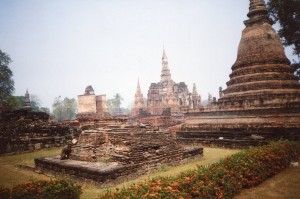
Sukhothai was founded in the mid 13th century by a king called Si Intharathit. Its third king, Ramkhamhaeng developed it, and he’s credited with a masterpiece of real estate salesmanship. [click to continue…]
by bria4123 on October 20, 2011
These are some of the places where I felt most connected with the ancient West.
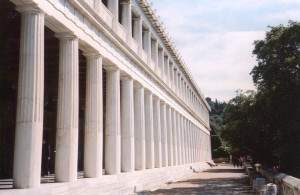
1. Athens. It lived up to its billing, and then some. Its ruins aren’t the best preserved–the stoa in the above picture is a reconstruction. But this city is where drama, democracy, realistic painting, realistic sculpture, temple architecture and the thought of Socrates and Plato either emerged or were perfected into standards that still hold. See all things ancient here and piece them together. [click to continue…]
by bria4123 on October 19, 2011
So who were the Nabateans? What were the people who built Petra like? How did they think?
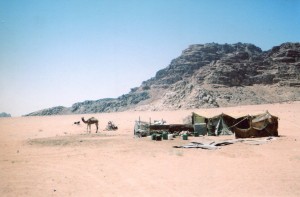
The Nabateans began as hardy desert nomads who knew lands nobody else would venture into. They were experts at finding waterholes, and they kept them well-guarded secrets. They were thus able to carry frankincense and other goods from the southern peninsula to the Fertile Crescent.
They first became known in the 4th century BCE, and their reputations grew quickly. [click to continue…]
by bria4123 on October 19, 2011
I found Petra as breathtaking as the pyramids at Giza. No photograph comes close to capturing it–please pardon my own humble efforts. What’s so special about this place?
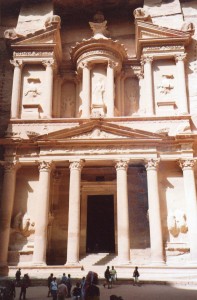
The Treasury, pictured here, provides one clue. It was actually a tomb. It elegantly adapts Greco-Roman architecture, but blends it with gods from other cultures, including who most scholars consider to be Egypt’s Isis. She was connected with the afterlife, and her cults became popular in Rome too–you can see her temple in Pompeii. Petra’s Treasury reflects a multicultural society that had become very wealthy. Its builders were called the Nabateans, and research is showing that they had a special culture in the ancient world. [click to continue…]
by bria4123 on October 9, 2011
Life forms in India proliferate and surround you, from elephants to mosquitoes and lots of species of ants. I brought a box of sweets to an office in Chennai, and put it on top of the refrigerator. I thought they would be safe there, but an hour later they were covered with ants.
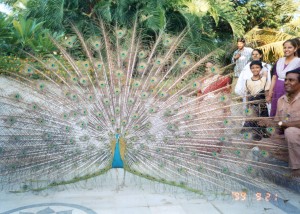
Those suckers were much smaller and faster than the docile species in Silicon Valley. Other species are almost an inch long. Nothing stays uneaten for long. Life transforms quickly in India. [click to continue…]
by bria4123 on October 9, 2011
Hindu festivals project an abundance of life forms that matches temples’. The ceremonies that take place around temples and throughout towns and villages often express the sense that the universe is a profusion of energies and forms, rather than the static and tame categories that many Westerners favor.
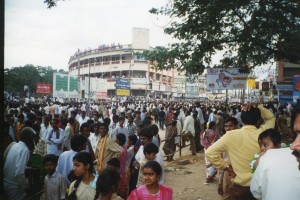
I was in Chennai during Devali. On a spiritual level, this ritual celebrates Rama’s return to his kingdom after a fourteen-year exile. Many people light candles. On a subtle level, this represents our inner light–our ability to apprehend cosmic unity. On a material level, it helps Rama find his way back home. But Devali has levels of meaning that are more colorful. [click to continue…]












